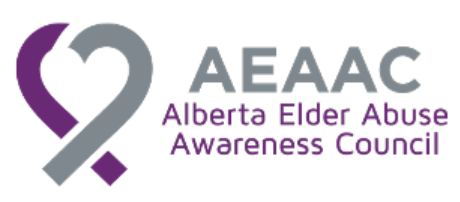- Details
- Published: 23 February 2016
In 2015, Statistics Canada announced that the percentage of people over the age of 65 (16.1%) now exceeds the percentage of those under the age of 15 (16%). While the difference is almost insignificant at this time, the gap is expected to increase substantially. By 2030, it is estimated that the percentage of people over 65 will reach 25% while the percentage of people under 15 will remain at 16%1. In order to accommodate a demographic shift of this magnitude, change will be required at multiple levels.
Our understanding of the causes and risk factors for financial abuse of older adults is one area in need of urgent attention. While accurate assessments of the magnitude of the problem are not yet available in Canada, research by the American company MetLife, suggests that the average loss for older victims of financial exploitation and abuse is approximately $120,00"2. Developing a comprehensive strategy to reduce financial abuse as Canada’s population continues to age will require a greater understanding of both the cognitive and physical changes that accompany the aging process, and an enhanced awareness of how these changes can increase the risk for financial abuse. Only then can we design appropriate products and services that can mitigate the full range of risk factors.
We are more aware today that dementia related illnesses, such as Alzheimer’s disease, are a significant risk factor for financial abuse. For example, recent research by Jilenne Gunther in the U.S. has revealed that older adults experiencing cognitive decline lose on average twice the amount as victims without cognitive decline.3 Given the prevalence of Alzheimer’s disease in Canada (i.e., 35% of people 85 and older), and the anticipated increase in the number of older adults in Canada over the next 15 years, the development of products and services that can protect people with cognitive decline is an urgent issue. Recent efforts to educate older adults about the risks associated with joint bank accounts and powers of attorney (POA), more stringent guidelines for determining capacity at the time of granting a POA, and calls for innovations such as the use of a designated monitor for joint bank accounts and POAs are all welcome developments that may help to reduce the financial abuse of cognitively impaired older adults.
However, cognitive decline is not the only risk factor for financial abuse as we age. While healthier lifestyles and continued improvements in health care have made it possible for more of us to be fit and active after age 65, functional and physical health decline remains an inevitable part of the aging process, and research suggests that these declines can create risk factors for financial abuse. For example, a recent study completed in the U.S. strongly suggested that “the need of some older adults for help and assistance in accomplishing everyday activities appears to elicit verbal abusiveness and economic exploitation, but not other forms of abuse."4
The potential magnitude of this risk factor in Canada is suggested by the results of a recent study conducted by Statistics Canada, which found that after the age of 65, the decline in functional health that accompanies aging tends to accelerate “with more severe disability (many activity limitations) occurring, on average, around age 77."5 These include significant limitations in areas of functioning such as vision, hearing, mobility, and physical dexterity. Statistics Canada refers to this functional decline in later life as “health-adjusted life expectancy” and the most recent estimate of "health adjusted life expectancy" at birth is 69 years for men and 71 years for women. Unfortunately, as this study concludes, this means that “the average Canadian can expect to live roughly 10.5 years with some level of disability."6
When considered together, these studies strongly suggest that cognitive decline is not the only risk factor for financial abuse of older adults. If the need for assistance with completing daily activities elicits economic exploitation as the U.S. study suggests, and if the average Canadian can expect to live with some level of disability for over 10 years, and that disability accelerates after age 77 as suggested by Statistics Canada, it is likely that a significant proportion of older Canadians will be at risk for financial exploitation as a result of functional rather than cognitive decline. Given the anticipated increase over the next 15 years in the number of older adults in Canada, and increasing longevity which almost invariably entails some degree of functional disability, the creation of flexible and safe payment tools that allow older adults to maintain their financial autonomy for as long as possible, is becoming an increasingly urgent task. Without these payment options, older Canadians experiencing short or long-term disability, illness, and mobility challenges find themselves turning to POAs and joint bank accounts prematurely and/or putting themselves at financial risk by sharing their debit cards and PIN numbers.7
Fortunately, a number of innovative alternative payment products and services have been developed in the United Kingdom (U.K.) that can serve as a template for the development of similar tools here in Canada. The U.K. payments system, the U.K. Public Guardian, the British Bankers Association, and other financial service organizations have collaborated to create a number of secure payment options that allow people to stay in control of their financial affairs when they are experiencing disability, illness, or mobility challenges."8 These alternative payment options, which have been designed to provide safe ways to allow others to help older adults with their finances, have been described in a helpful brochure entitled Managing Payments: Safe Ways to Allow Others to Pay on Your Behalf and it is readily available to older adults.9 This nine-page brochure clearly outlines a number of payment options that older adults can use to maintain secure financial autonomy. Some of these tools are already available in Canada such as the use of cheques, card payments, telephone banking, automatic bill payment options, POAs, and joint bank accounts. Each option is clearly described with reminders and recommendations for their safe use. However, the brochure also describes a number of additional innovative and flexible payment options that can be used such as one-off cash withdrawals for fixed amounts that can be used in branch or at a cash machine, secondary debit cards and bank accounts which provide access to limited dollar amounts, and prepaid debit cards. The overall goal of the brochure is to ensure that every older adult is aware of, and fully understands, that a range of payment options exist to help with financial management which can be tailored to their unique circumstances.
It is interesting to note that in reviewing the range of payment options that are available for older adults in the U.K. it is readily apparent that the majority of the options are simply modifications of existing products and services. However, what is particularly progressive and innovative about the work in the U.K. is the willingness to both recognize the wide range of challenges that older adults will face as they attempt to maintain financial autonomy, and to design payment modifications to meet those needs. Meeting the needs of Canada’s older adults for flexible and safe financial services and products will be a critically important issue over the next two decades. It will be interesting to see how Canada addresses this pressing issue.
1. More Canadians are 65 and over than under age 15, StatsCan says. (September 29, 2015).
2. Gunther, J. (February, 2016). Research Report: AARP’s BankSafe initiative: A comprehensive approach to better serving and protecting consumers.
3. Gunther, J. (2011). The 2011 Utah economic cost of elder financial exploitation. Utah Division of Aging and Adult Services.
4. Acierno, R., Hernandez, M., Amstadter, A., Resnick, H., Steve, K., Buzzy, W, and Kilpatrick, D. (2011). Prevalence and correlates of emotional, physical, sexual, and financial abuse and potential neglect in the United States: The National Elder Mistreatment Study. American Journal of Public Health, Vol 100(2), p. 292-297.
5. Decady, Y. and Greenbert, L. (July 2014). Ninety years of change in life expectancy. Statistics Canada. Catalogue no. 82-624-X
7. Three quarters of people who need help with paying bills or getting cash out at risk of fraud as they share their card PIN number. (January 28, 2015). http://www.thisismoney.co.uk/money/saving/article-2929579/Three-quarters-people-need-help-paying-bills-getting-cash-risk-fraud-share-card-Pin-number.html
8. Payments UK. Leading the Way we Pay.
9. Managing Payments: Safe Ways to Allow Others to Pay on Your Behalf. Payments Council.

















